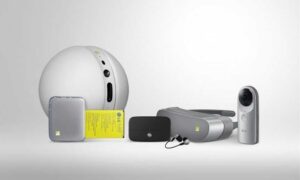Smartphones with a great camera and the ability to record high-definition video are no longer difficult to find. However, while it’s good to have a smartphone with a powerful camera, using poor video making technique will probably result in a poor video product no matter how high-end your equipment. By following these helpful tips, shooting great video with your smartphone will be easy.
Good lighting is critical
Proper lighting has a huge impact on smartphone cameras as they have smaller image sensors and lenses. Try as much as possible to shoot your video in brightly lit areas. This will help avoid unnecessary shadows and grainy areas in your video. Conversely, you should be careful not to point the camera directly at bright light sources, which will cause unusable overexposed footage and lens flaring. Lighting should be stable and steady.
Stop shooting vertical video!
Nothing ruins great footage like having a black vertical bar on each side of your video. To avoid this amateur mistake, make sure to use landscape orientation and not portrait orientation while recording. Hold your phone horizontally so that videos played back on other screens (virtually everywhere) will look fine.
Stay steady
If you don’t want your video footage to come out distorted, blurred, or affected by ‘rolling shutter’, the best thing to do is to keep your phone steady while recording. Use both hands to hold your smartphone as close as possible to your body as you record the video. This can be a bit fatiguing in long takes or sequences, so consider using stabilisers or tripods to keep your device still.
The audio matters as much as the video
A good video can be let down by poor audio quality. While you want your video to look good, the quality of your audio is as important – so it should matter as much, if not more. Unfortunately, the built-in microphone in most smartphones (if not all of them) is both low quality and improperly placed, and unnecessary environmental noise (such as wind) can be next to impossible to edit out later.
Try shooting your video in a quiet place, preferably indoors when possible with less ambient noise. Professionals are shooting all sorts of commercial grade videos and feature films using their mobile phones but audio is almost ALWAYS captured with a separate recording device suitable for the job. So, for great quality videos with superb audio, you should get an external recording device or at least a directional microphone that will work with your smartphone.
If using an external microphone isn’t possible or practical, then stay as close to the audio source as possible and try this little trick: use your hand to cup around the phone’s microphone (but don’t completely cover it). This way, unwanted noise can be reduced, which might give your final product a chance.
Improve your videos with mobile apps
The camera app on your smartphone may do a good job but there’s more to video recording than what most of them have to offer. Some third-party apps are very intuitive with great features for those new to developing video content. Look out for our next story which will cover the best of these.
Be prepared for the shoot
Before you begin recording your videos, make sure that you have all of the gear, props, scripts, actors and shooting locations ready to go. Additionally, make sure your phone is charged and that you have enough storage space (available memory) to store the footage – high definition (HD) video files can get large and will drain a battery quickly.


